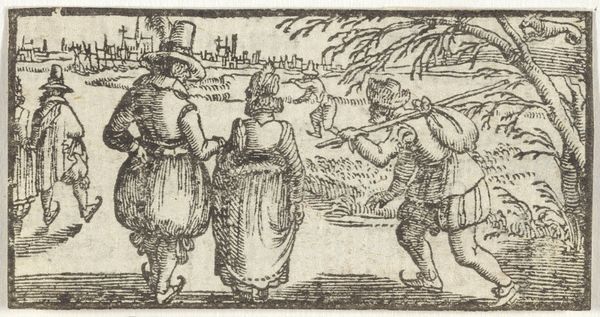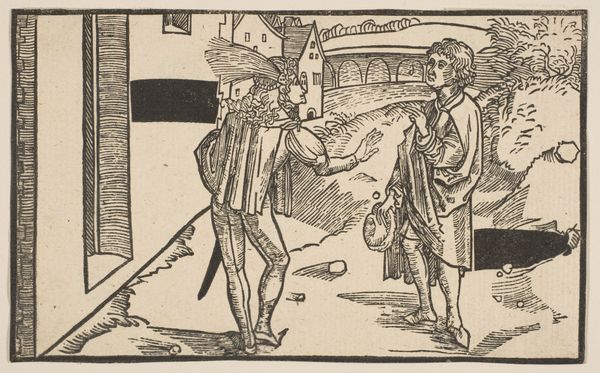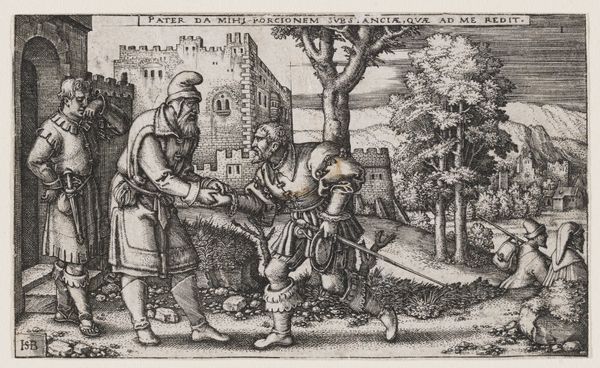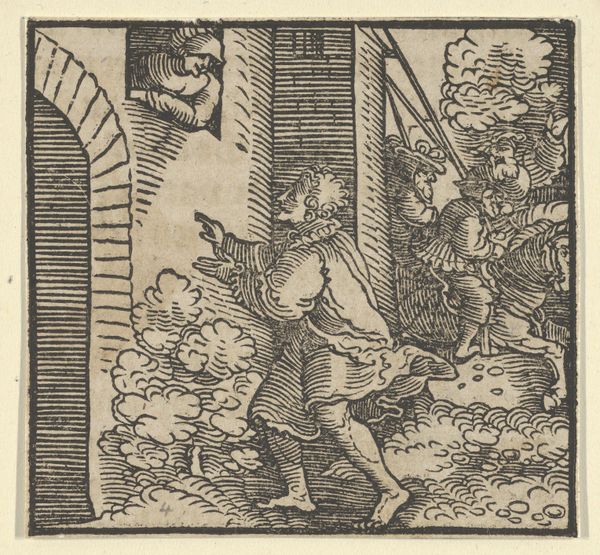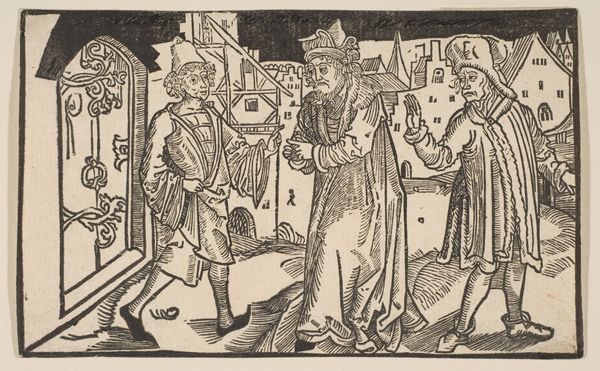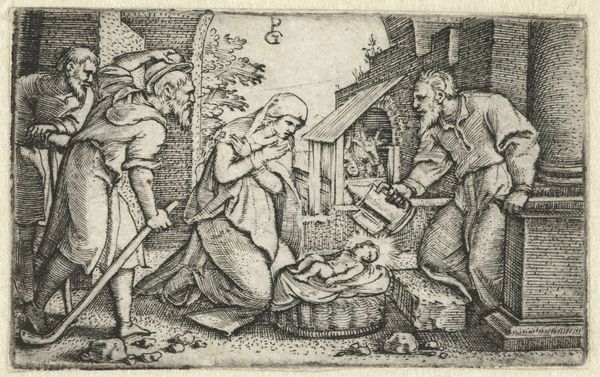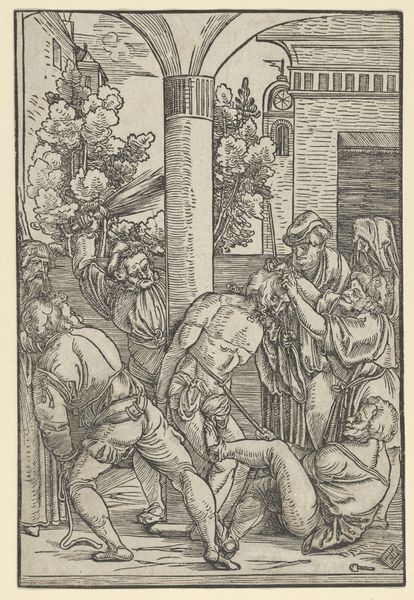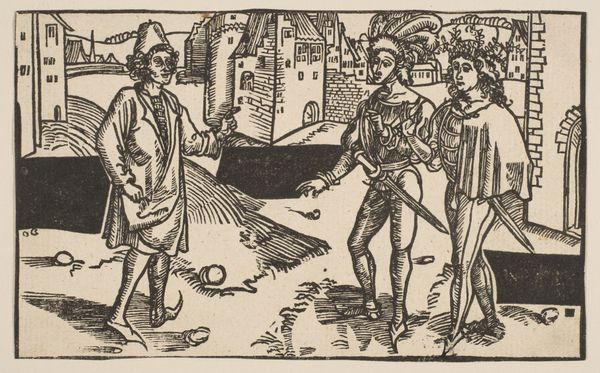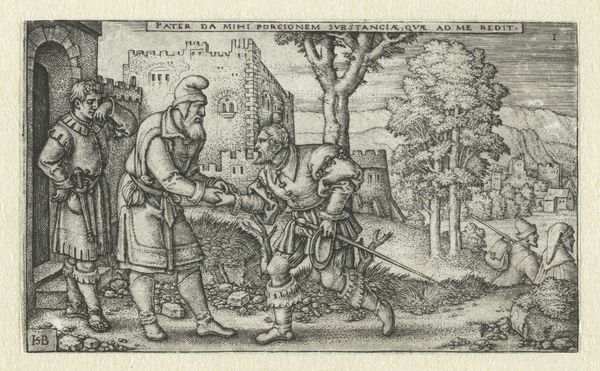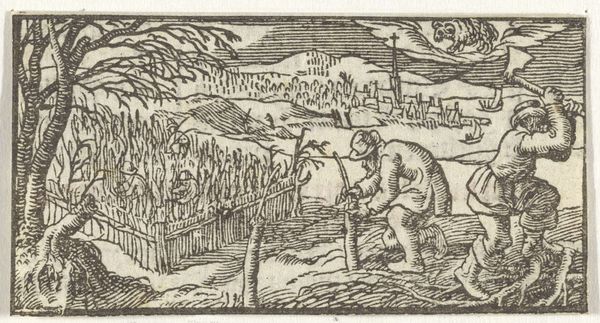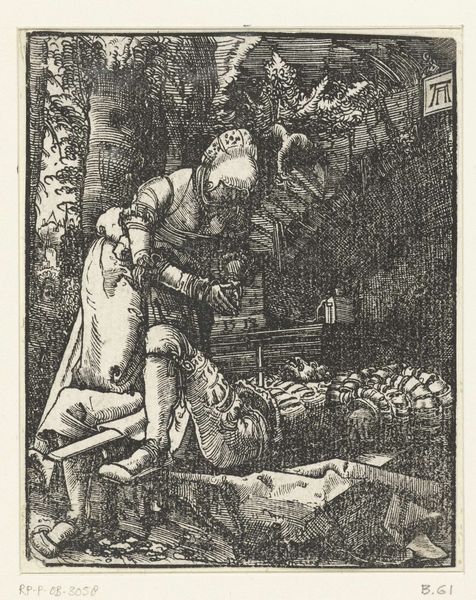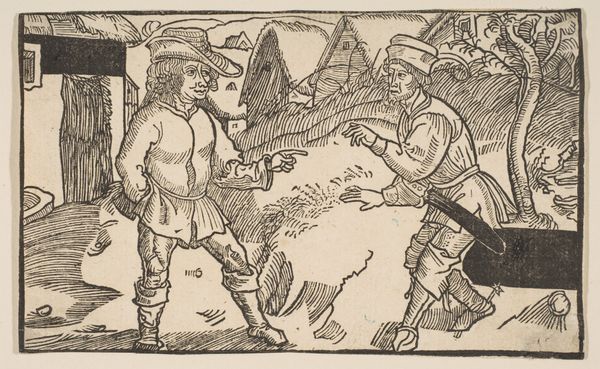
Eunuches, from The Comedie of Terence, 19th century reprint 1485 - 1528
0:00
0:00
drawing, print, woodcut
#
drawing
#
medieval
# print
#
pen illustration
#
pen sketch
#
woodcut
#
men
#
history-painting
#
northern-renaissance
#
building
Dimensions: sheet: 3 1/2 x 5 5/8 in. (8.9 x 14.3 cm)
Copyright: Public Domain
This woodcut, ‘Eunuches, from The Comedie of Terence,’ by Albrecht Dürer, presents a scene rich with cultural undertones. At its heart lies the exchange of a beaded object, a symbol laden with meaning. In Renaissance Europe, beads were often associated with prayer or commerce. Look closely, and we see how similar beads appear in rosaries, objects of devotion, or in merchant's inventories, signifying transactions. This motif is not isolated. Consider how similar objects appear in Byzantine mosaics, where strings of jewels denote status and power. In the hands of Dürer, we see the merchant class gaining prominence in this era through the adoption of this symbol. The act of exchange itself is also very relevant here. It evokes ideas of transition, the transfer of not just material items but also of power, influence, and even fate. This scene may elicit a deep, subconscious response, reminding us of our own negotiations and the silent language of commerce that permeates our lives. It is a symbol of the constant, cyclical nature of human trade, echoing through centuries.
Comments
No comments
Be the first to comment and join the conversation on the ultimate creative platform.


